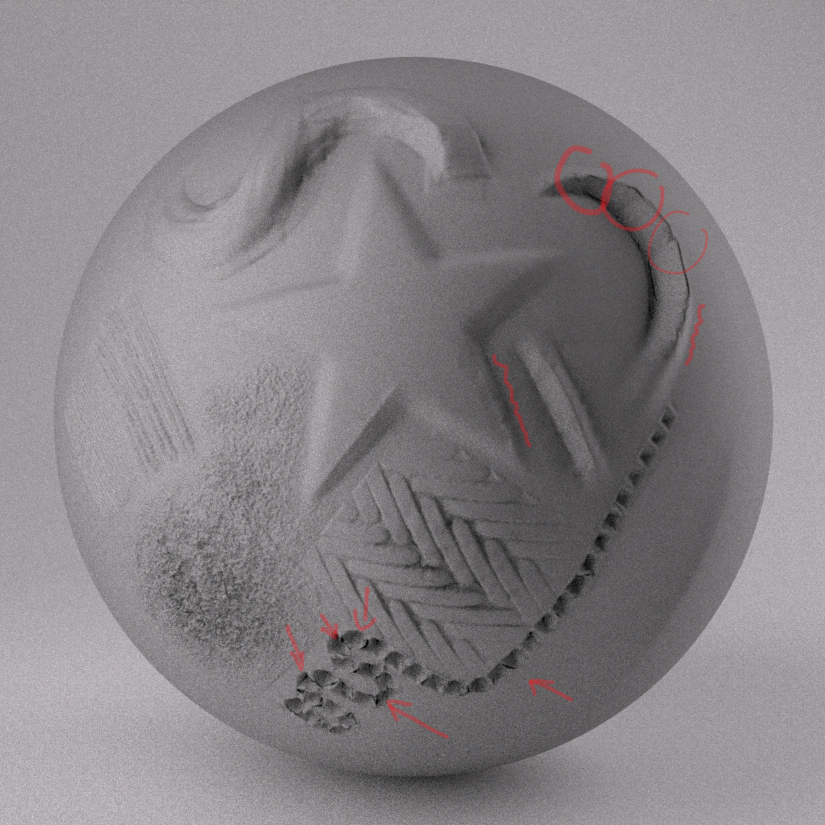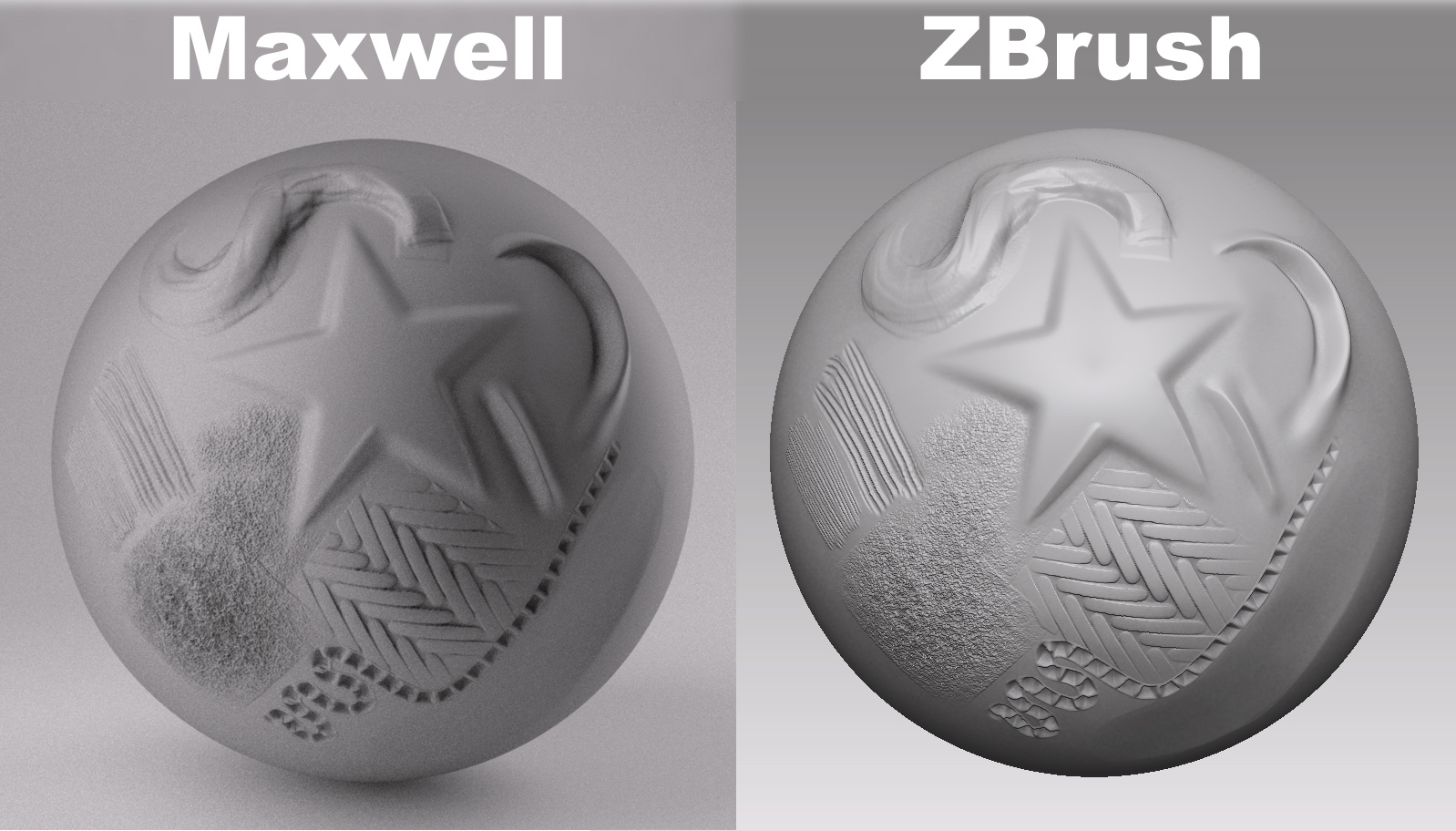Hey,
I did some test on my side today, because I really wanted to figure the map things out!
So I used a sphere from Zbrush and used a set of different brushes to make some stroke on it, making sure the UV’s where smoothed as I was stepping up subdiv level, then I generated 16bit and 32bit maps. then imported my basemesh in Maxwell, smoothed the edges using the recal button, after that I applied my 16bit map generated from Zbrush (Smooth UV_FlipV) precision in maxwell set to 20 and displacement setting set to default (2.0 - 0.5) and that’s what I got!!
[attach=211431]Lv1Mrg_16bitMaptTest.jpg[/attach]
regardless the way I was generating my displacement in Zbrush, it still rendered the same glitches there and then even using the basemesh at a higher subdiv , Not so good. I also tried 32Bit without any success, it doesn’t seems to do anything at all, but anyway then I looked at my smoothed geometry in Maxwell and realized it wasn’t uniformly smoothed, I was wondering if it would smooth out better in Maya so I exported my Basemesh to Maya then smoothed it out, and exported back in Maxwell as a MXS file. Opening my brand new MXS, the smoothed geometry of Maya was preserved. and was indeed much better than the way Maxwell smooth edges.
then I apply the same setting than the previous render above and that’s how it came out. the precision was only set to 20 so if you are picky you could set it up a little higher to make sure the edges stay sharp.
[attach=211436]16bitMap_Test.jpg[/attach]
it looks pretty good to me!! no voxelisation that takes for edges, so from now on that how I will render my model in Maxwell using 16bit maps.
Attachments







